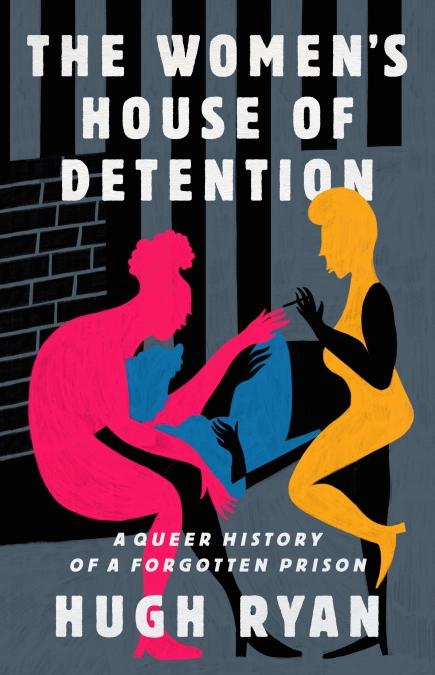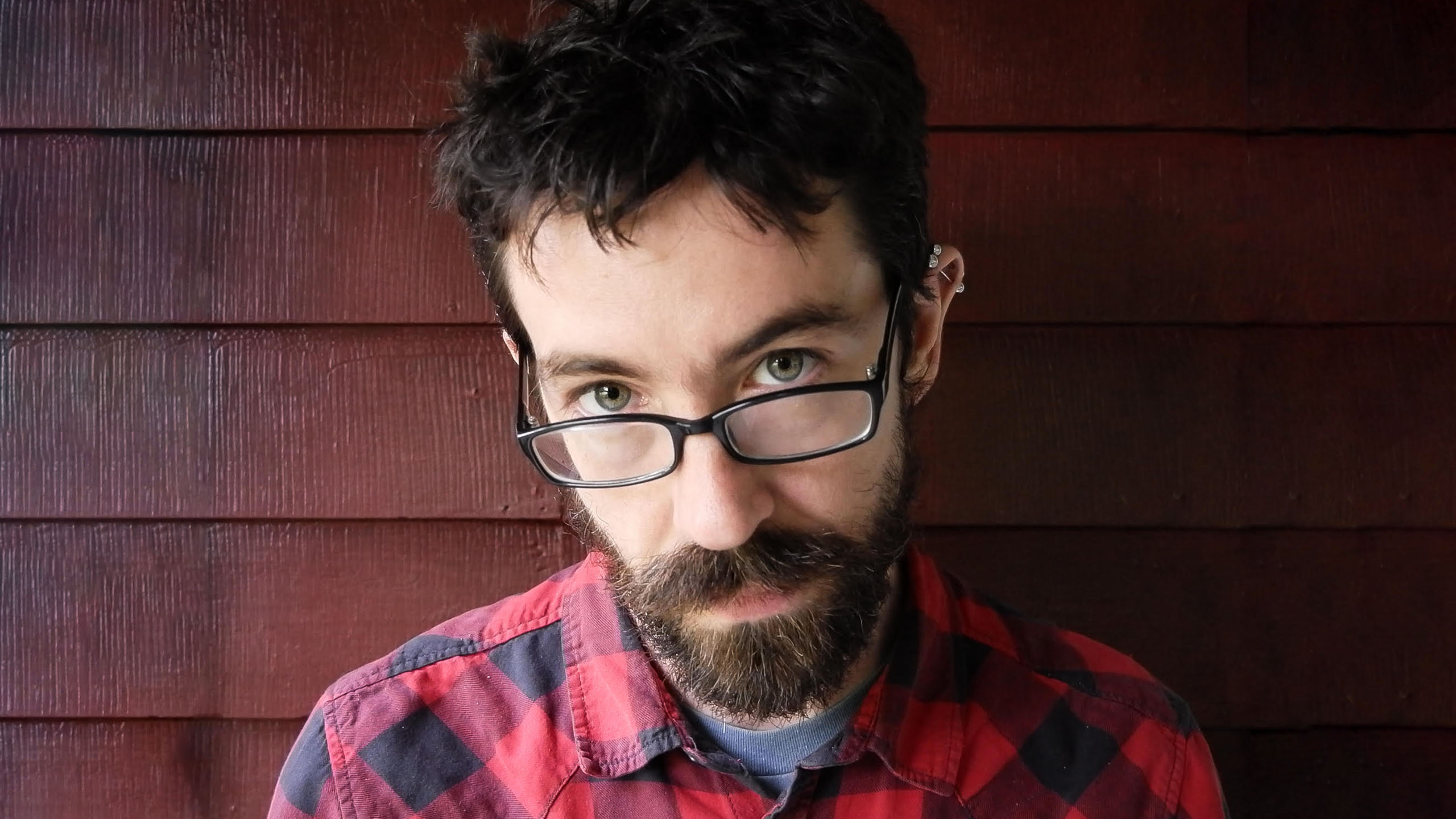Curator and historian Hugh Ryan’s first book, When Brooklyn Was Queer, is what a queer history should be but rarely is: fun, entertaining and gossipy while still accurate and informative. It also includes a wide enough array of queers (some famous, many not) that it feels like a portrait of a community, and not just a corner of it.
The title subject of Ryan’s newest LGBTQ+ history, The Women’s House of Detention: A Queer History of a Forgotten Prison, published this month by Bold Type Books, played an important supporting role in the 1969 Stonewall Riots: the building, located in New York City’s Greenwich Village, was close enough to the Stonewall Inn that incarcerated people, including some Black Panthers, set fire to their possessions and pushed them out of the windows in solidarity. The institution, which operated from 1932 to 1974, was central in the early days of the subsequent queer liberation movement, which was then explicitly anti-carceral, in part because of the proximity of the House of D and how many activists were warehoused there.

Credit: Courtesy of Bold Type Books
The House of D, which was torn down and replaced by a park, also served as a reminder for all queer women, gender nonconforming and transmasculine people passing by, including those on their way to queer nightlife, that they could easily be arrested and incarcerated themselves. The estimate of queer people in women’s prisons reported in a 2011–2012 survey was a whopping 42 percent, but queer people’s lives were so criminalized when the House of Detention was operating that queer people were dominant in that space, as recorded by writers who spent time there, like Angela Davis and Andrea Dworkin.
Through the stories of queer incarcerated people at the House of D over its 42-year existence, Ryan illuminates the part of 20th-century queer life that often remains untold, centring queer women and transmasculine people, most of whom were poor, and many of them people of colour. Through them we see the evolution of queer life through much of the 20th century, including some of the incarcerated (and formerly incarcerated) people’s defiance of the rampant homophobia of that time.
Ryan writes that one formerly incarcerated Black woman, Tonie, explained her romantic relationship with another woman to her social worker: “Oh, but I am abnormal.” The social worker notes her “smile of satisfaction” as she says it. Toni’s self-awareness and pride came decades before Stonewall.
Xtra spoke with Ryan by phone shortly before the book’s publication.
Even though The Women’s House of Detention is about one building and the people who pass through it, it feels more expansive than When Brooklyn Was Queer, which covers a whole borough. What surprised you about where your research on the detention centre took you?
A number of people in my life, mostly older, queer women, had pointed to the House of D as important to the development of Greenwich Village and the queer history there. I didn’t expect it was going to take me to where Black liberation and gay liberation are interconnected.
Some of the stories of Black women in the book reminded me of Saidiya Hartman’s history of young Black women in the early 20th century, including many who were at Bedford Hills, another New York women’s detention facility, Wayward Lives, Beautiful Experiments.
Right. [Lesbian activist] Mabel Hampton is in both books.
What other histories have influenced your book and did you have in mind books you absolutely didn’t want yours to be like?
One I did not want my book to be like was Sara Harris’s Hellhole, the only other book written about the Women’s House of Detention. On my first read, I thought: it’s homophobic, it’s misogynistic, it’s racist. But it’s also an attempt at dealing honestly with the lives of people who were incarcerated. As I learned more I realized how little it seemed to prioritize those lives. A lesson I trace back to Joan Nestle (a co-founder of The Lesbian Herstory Archives): we were talking about a drag king named Buddy Kent, and Joan said, “I just want you to understand Buddy was a real person trying to make a life for herself.”
Books I did want mine to be like are Jen Manion’s work: Liberty’s Prisoners and Female Husbands, Saidiya Hartman’s book and Angela Davis’s work, which uses abolition as a rubric throughout.
What’s your—“favourite” is the wrong word because many of these queer women’s and transmasculine people’s lives don’t end well—but what do you think is the most important story you included and why?
The alliance between gay liberation, Black liberation, the Young Lords and the Radicalesbians. All of these activist groups met together to protest the House of D. I see a lot of efforts to pit gay people versus trans people and Black rights versus trans rights. It was grounding to see that these struggles have always been linked.
Even though many of the people in the book have terrible circumstances in their lives, what you write isn’t a wallow in tragedy as so many stories, fiction and nonfiction, about queer people have been. Can you talk about the importance of including more than just the awful things?
Nobody’s life is like that except for Job’s from the Bible. When we take away the fullness of their lives, we reduce them. The women and trans folks who passed through the House of D created Greenwich Village as we know it. They helped define queerness as we know it. They are critical to history, not just queer history.
A lot of the problems prison abolitionists point out in the system now: sexual abuse by officials, overcrowding and the disastrous effect of the bail system on poor, incarcerated people are present at the House of D, even at the very beginning. Were you surprised these problems were endemic in the carceral system in the early 20th century?
I was surprised by how reform seems to do so little, and these problems continue unabated. Black activists who were involved with socialists during the Great Depression protested these conditions. If medicine were still practised as it was in the late 18th century, we would think that was barbarism. But we have a justice system from the late 18th century.
I was struck by the bail experiment in the book proving bail was a purely punitive measure for the poor and its contemporary relevance. The folks running the experiment used one set of incarcerated people as a control. The people in the control group stayed at the House of D before trial and were disproportionately convicted and their lives ruined, like most poor people who couldn’t raise bail, and unlike most of the people lucky enough to not be in the “control” group. It’s just one example of how a lot of people in power in the book who, at least at the time, seemed to mean well, were a destructive force in the lives of incarcerated and formerly incarcerated people. Do you see parallels in how nonprofits and other places providing services to poor and incarcerated people, including queer ones, operate today?
We need to be listening to the people today who are active in those movements. I’m very much a historian and things that happened after the year 2000 are confusing to me.
To a lot of us.
It goes back to this idea: is reform possible? Black Panther Party founder Huey P. Newton said you have to understand that the end goal is transformation. The direction of the world is slanted to favour structural and institutional racism. If you are not fighting against it, it’s going to push you in the direction of more racism, more fascism. When we talk about prisons and making them slightly better, it’s the same as when we talk about police forces and making sure they have a rainbow sticker and a float at Pride.
You write about reading between the lines of what was written about the House of D, especially in the mid-century, including an exploitative book by Virginia McManus, Not For Love. From the start, you were quite sure she was queer, even though she says nothing directly. You turned out to be right and even tracked down her ex-girlfriend. What led you to the ex-girlfriend? And what tipped you off McManus was queer?
If you read her book, it’s very obvious. There are a lot of moments where she practises the art of “gay vague.” She gets close to discussing what the bedroom situation is with her and her roommate and then pulls back. You see them operating like a couple, but not being named as a couple. They’re hanging out all the time with other couples who have names that seem to be of the same gender. I found a memoir by a painter, George Deem, where he referenced Virginia McManus. He gave the real name of her girlfriend [Nan McTeer] and the name of the man she married, a gay man who was a drag queen. I was able to track down [Nan’s] Facebook profile, and reached out. We were able to talk twice before she passed away.
I also found a magazine article Virginia McManus wrote called “Love Without Men in a Women’s Prison” clearly talking about queers. She talks about how, I forget the number, but like 50 percent of women there were queer, 25 percent were queer for the duration of their stay and 25 percent were straight, “square”—and everybody ignored them. She never said which group she was in.
It casts a larger light on how many things have been written in the mid-century that don’t include queerness.
And how many ways we acknowledge and disavow prisons as queer spaces. How many times do you hear jokes about rape in prisons? How many times do you see sexy, porny depictions of women in prisons? These are ways of talking about something we know is true.
It seems like you dug up so many stories for the book, but I’m sure there were some you left out. Is there one you wish you could have included but you just didn’t have a place for?
There was a woman named Alice in the Women’s Prison Association files, the same social work files I found most of these people in. But it was late in the life of the WPA, when it had become more homophobic and more transphobic. Alice is listed in the record as a Black butch lesbian. A lot of records from this time have the note “she is a lesbian, not appropriate for services.” With Alice, much like in Sara Harris’s Hellhole, it felt like the perspective was white-supremacist and lesbophobic. Instead, I use a little bit of the story of Paul, another Black woman who is masculine, criminalized, open about her lesbianism, but is able to tell her own story a little. I had less material on Paul, but I could trust it more.
Oftentimes I hear people say things like, “You’re never going to find stories about Black queer women. Historically, they just weren’t kept.” But I didn’t make it through the entirety of the Women’s Prison Association collection before the pandemic hit. More is to be found.
Is there anything in the book you wished I asked about but haven’t?
Histories are out there we have not yet uncovered or looked at in this very modern light. We’ve talked about Greenwich Village as queer space for many decades. But the emphasis on Stonewall leaves out the nearby prison. Every year there is a debate about every single person who was or was not at Stonewall. What we’ve been trying to do is take an existing story and fit in around the edges the people of colour or the trans people. We shouldn’t abandon the story of Stonewall. But instead of debating whether or not Sylvia Rivera and Marsha P. Johnson were there on the first night or the second night or late on the first night, we should ask: What else was happening? Who else was doing things?
This interview has been edited for length and clarity.


 Why you can trust Xtra
Why you can trust Xtra


